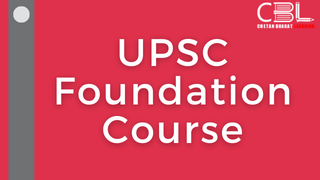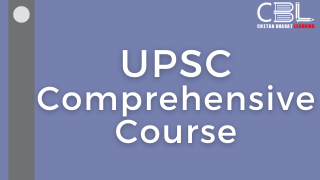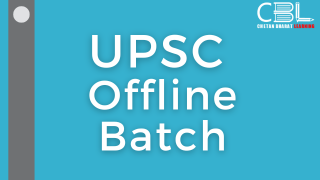
Important for UPSC, State PCS
Prelims: Swachh Bharat Mission-Urban, open defecation, Garbage Free Star Ratings landfills sites .
Mains: General Studies Paper 2 . Swachh Bharat Mission, Government Policies and Interventions
Why in the News ?
Since the launch of the Swachh Bharat Mission (SBM) Urban 2.0, large cities have not cleared any land in half of their legacy landfill sites, with just 38% of the total dumped waste has been remedied so far.
Swachh Bharat Mission (SBM):
- About:
- The Government of India had launched the SBM on 2nd October 2014 to accelerate the efforts to achieve universal sanitation coverage and to put focus on sanitation.
- The mission has two components – rural (SBM-Gramin, overseen by the Ministry of Jal Shakti) and urban (SBM-Urban, overseen by the Ministry of Housing and Urban Affairs [MoHUA]).
- Under these components, all villages, Gram Panchayats, Districts, States and UTs in India had to declare themselves “open-defecation free” (ODF) by 2 October 2019 – the 150th birth anniversary of Mahatma Gandhi
- Achievements:
- As one of the largest cleanliness drives in the world, SBM has brought in a remarkable transformation and traceable benefits to the society as a whole.
- Many States have achieved the status of 100% ODF and Individual Household Latrines (IHHL) coverage, thereby leading to a sea change in the dignity of people, especially women.
- This mission acts as a driver for eliminating the gender disparity through the construction of gender-specific latrines in public areas such as schools, roads and parks.
- This public movement will have an indirect positive impact on society by increasing the enrolment ratio of girls in schools and improving health standards.
Swachh Bharat Mission (SBM-U 2.0) (2021-2026):
- Vision: Make all cities Garbage-Free and ensure proper grey and black water management.
- Key Focus Areas:
- Achieving ODF+ and ODF++ (for ULBs with a population below 1 lakh).
- Source segregation of solid waste, promotion of the 3Rs (Reduce, Reuse, Recycle), and scientific processing of municipal solid waste.
- Remediation of legacy dumpsites to tackle long-standing waste management issues.
- Financial Outlay: Approximately Rs. 1.41 lakh crore (2021-22 to 2025-26).
- New Components:
- Fecal sludge management in ULBs with a population below 1 lakh.
- Sustainable sanitation, wastewater treatment, solid waste management, and capacity building.
Following are focus areas of Mission:
- Faecal sludge management and wastewater treatment,
- Source segregation of garbage,
- Reduction in single-use plastic,
- Reduction in air pollution by effectively managing waste from construction and demolition activities
- Bioremediation of all legacy dump sites.
Various initiatives under Swachh Bharat Mission Urban:
Ministry of Housing and Urban Affairs (MoHUA) launched various initiatives to make SBM-U a successful project. This includes,
- ODF, ODF+ and ODF++ Protocol:
- Norms under ODF: No visible faeces shall found in the environment and every household, as well as public/community institutions, should be using safe technology option for disposal of faeces.
- Norms under ODF+: Not a single person should be defecating and/or urinating in open. All community and public toilets should be properly maintained and cleaned.
- Norms under ODF++: Proper treatment and management of faecal sludge/septage and sewage are safely managed and treated. There should be no discharge or dumping of untreated faecal sludge/septage and sewage in drains, water bodies or open areas.
- Water + Protocol: It is designed to ensure that no untreated wastewater is discharged into the open environment or water bodies.
Challenges ahead:
- Despite significant progress under the SBM, a large portion of legacy waste and landfills continues to present environmental, health and space constraints for cities.
- The cities are facing the challenge of clearing the remaining 65% of land and remediating 62% of garbage left at the legacy landfill sites, with less than 2 years to go before the scheme is completed.
Way forward :
- Proper planning before starting the bioremediation process.
- Stopping dumping fresh waste on the sites undergoing remediation.
- Providing alternative locations to process fresh waste.
- Stopping the use of the fine soil-like material generated from the sites as compost, because of the possibility of contamination due to the presence of heavy metals.
CBL Practice Questions for Prelims
What is the main objective of the Swachh Bharat Mission (SBM) 2.0 Urban ?
- A) To improve agricultural productivity
- B) To promote rural employment
- C) To enhance sanitation and waste management in urban areas
- D) To develop smart cities
Answer: C) To enhance sanitation and waste management in urban areas
CBL Mains Practice Question
Discuss the significance of community participation and behavioural change in achieving the objectives of SBM 2.0 Urban. How can awareness campaigns be effectively designed?




Leave a Reply
You must be logged in to post a comment.